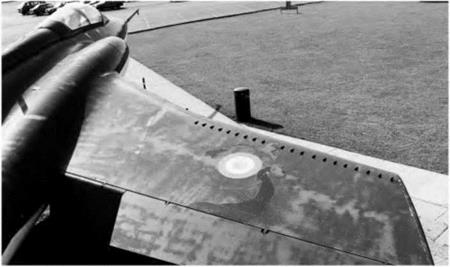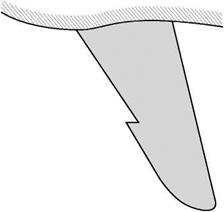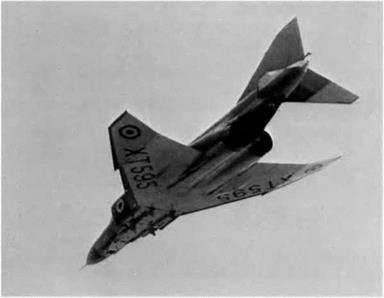Other devices to prevent or delay separation
There are several other devices which have been used to prevent or delay separation of the boundary layer, and so allay the rapid increase in drag at the sonic barrier, or the buffeting, or violent changes in trim which are liable to occur as a result of shock waves or separation, or some or all of these troubles.
|
|
Fig 1 ID Vortex generators
The Buccaneer again, showing vortex generators on the outer wing. This ‘fix’ was used to improve wing flow attachment on many early swept-wing aircraft.
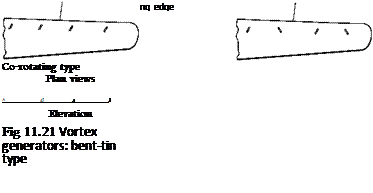
A thickened trailing edge is sometimes employed; this causes vortices which have much the same effect as those created by vortex generators, though naturally the effect is not felt so far forward on the wing surface.
On heavily swept-back wings fences (Figs 11.22) are often fitted; these are vanes of similar height to vortex generators, but running fore and aft across the top surface of the wing, and designed to check any spanwise flow of air along the wing, for this in turn is likely to cause a breakaway of the flow near the wing tips and so lead to tip stalling, particularly on swept wings.
Another problem with highly swept wings is the tendency for the flow to separate in the tip region first. This causes all sorts of problems, for example large changes in pitching moment. This effect may be reduced by introducing a notch or saw-tooth in the leading edge (Figs 11.23 and HE). The notch also generates a strong vortex which controls the boundary layer in the tip region.
Leading-edge droop and leading-edge flaps are becoming quite common features of high-speed aircraft, but these are to prevent separation of the flow at the low-speed end of the range, i. e. at large angles of attack, and so help to solve one of the main problems of aircraft designed for transonic and supersonic speeds, that of making them fly safely slowly. A permanent droop is called leading-edge droop or droop-snoot; when it is adjustable it is called a leading-edge flap. Either may be combined with trailing-edge flaps and other devices, and Fig. 11.24 (overleaf) illustrates a combination of leading-edge droop, double slotted trailing-edge flaps, and air brakes – all helping to the same end.
 |
But to conclude the problems of flight at transonic speeds on an optimistic note, it can generally be said that once one has a good transonic shape, it
Fig 11.22 A boundary layer fence
|
|
Fig 11.23 Leading edge saw-tooth or dog-tooth
|
|
Fig 11E Saw-tooth or dog-tooth
(By courtesy of McDonnell Douglas Corporation, USA)
The Phantom (RAF version), showing clearly the dog-tooth on the leading edge; the outer wings have 12° dihedral; there are blown leading and trailing edge flaps; the slab tail has 15° anhedral and a fixed slot; the rudder is inter-connected with the ailerons at low speeds.

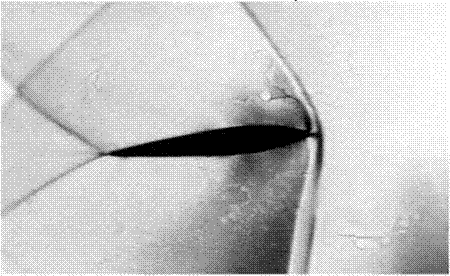 |
Leading edge flap, double-slotted trailing edge flap and air brake
Fig 11F Shock waves
Shock waves from an aerofoil at incidence to the flow. Note the stronger leading edge shock on the underside. The wave in the top left-hand corner is a reflection from the wind-tunnel wall.
remains good, and the flow around it changes little between subsonic and transonic speeds.
Can you answer these?
1. Is the speed at which sound travels in water higher or lower than that at which it travels in air?
2. Does the speed of sound change with height – if so, why?
3. At what part of a wing does a shock wave first form?
4. What is the buffet boundary of an aircraft?
5. What is a Mach Number, a critical Mach Number, and a machmeter?
6. How does the appearance of a shock wave on a wing affect the pressure distribution over the wing?
For solutions see Appendix 5.











